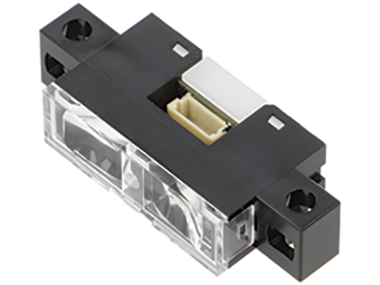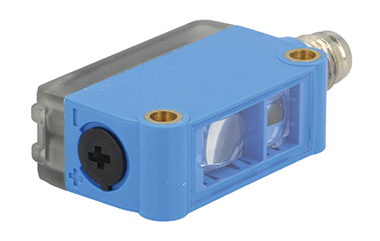
Colours are something quite natural, and most people can identify them without any problem. Technically, however, colours are simply electromagnetic waves of varying length. Detection of colours by a sensor, however, is performed using different approaches. For this purpose, various types of vision systems and sensors that detect colour and contrast are used, depending on what the outcome needs to be.


Methods of colour detection
Colour recognition with specialist sensors is not as simple as it may seem. Colours are electromagnetic waves of different wavelengths, whose value falls within the visible light spectrum – somewhere in the range from
Every colour sensor operates by reading the electromagnetic wavelength. It sends a beam of white light to the examined object, against which the light is reflected and is sent back to the sensor where it is analysed.
Simple devices, also known as colorimeters, are usually based on three RGB filters, which transmit waves of specific lengths only. These then reach the light-sensitive elements, where they are measured (converted into a measurable value – usually a voltage). As soon as the voltage value is available, the electronics in the sensor can easily convert it into something comprehensible to a human or other machine.
Spectrophotometers are an alternative to sensors with RGB filters, although a much more complex one. In this case, the wave reflected by the surface is dispersed into beams of a specific colour, which are then captured by the corresponding photosensitive elements. In this way, the colour of the examined object can be determined very precisely.
In operation and design, contrast sensors are somewhat reminiscent of the already introduced vision colour sensors. Here, a beam of light is also transmitted, which, once it is reflected by the surface under examination, returns to the module. There, it is analysed in terms of its strength – in other words, the amount of light that has returned to the sensor is checked. On this basis, the contrast can be determined. The darker the surface to be tested, the less light will return to the sensor, and thus fewer photons will reach the photosensitive element that will convert the value into a voltage. It is worth knowing that contrast sensors are not based only on white light. They can also emit beams in other colours, making it easier to analyse the contrast of coloured objects.
Applications of vision sensors
Vision colour and contrast sensors are very much in use in modern industrial plants. These include industries such as automotive, pharmaceutical, food, chemical, and printing. Vision sensors are an indispensable part of larger machine assemblies, where they serve as detectors to determine the production quality. They are also used in many types of sorting machines available.
When choosing vision sensors, it is worth considering aspects such as the sensitivity of the module, the maximum detection distance or the electrical parameters. The choice will mainly depend on the industry and application. In most cases, specifying a particular colour will not be necessary. Many production inspections are in fact solely based on colour determination according to the OK/NOK principle. Simple and inexpensive vision sensors will be ideal for such solutions. In the case of more demanding production processes, more precise sensors should be sought, as their capabilities in terms of colour or contrast detection will be much greater.

© Technews Publishing (Pty) Ltd | All Rights Reserved